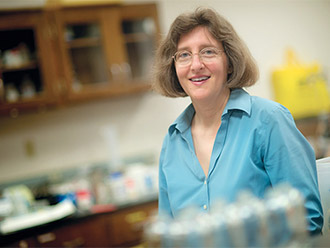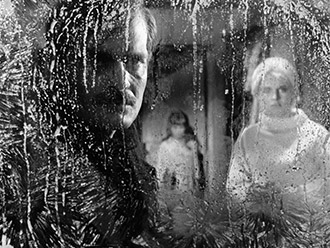From the moment we open our eyes in the morning, we make decisions—get up or hit snooze? Make the bed or leave it messy? Coffee or juice? And they only accumulate from there: By some estimates, the average adult makes about 35,000 conscious and unconscious decisions every single day. We base these decisions on the information available to us—information that, in today’s global knowledge economy, has become staggering in its scope. In fact, one 2011 study found our daily information intake to be about 34 gigabytes, or around 100,000 words. That’s a lot of data for our brains to process.
To cope, those brains have become experts at forming quick assessments and perceptions of even very complicated concepts. This is fine—and perhaps beneficial—when we’re deciding what to have for breakfast. It’s much less so when we’re forming opinions on current events or choosing which candidate to vote for.
“Most people have a tendency to want to make up their mind quickly and come to a solution regardless of how much evidence there is for it,” says Daniel Levine, professor of psychology. “And often, people’s use of information is selective. We sometimes don’t use all the information that is given to us, and sometimes, we go well beyond it.”
In many ways, this critical but complicated process—of sorting through massive amounts of information, determining the veracity, and deciding what action to take—is exactly what all researchers at The University of Texas at Arlington are working to improve. In their search for greater understanding, our researchers are shaping perception, instilling in students the capacity for interpretation and the ability to find meaning in the world.
Video Games and Violence
Sometimes, researchers’ work into perception parallels the national discourse. In late 2019, a gunman in El Paso, Texas, opened fire in a Walmart, killing 22 people. In the wake of the tragedy, citizens sought answers for how this act of violence could happen—and as they have done time and time again since the early 1990s, they zeroed in on a possible instigator: violent video games.
“We must stop the glorification of violence in our society,” then-President Donald Trump commented in remarks at the White House after the El Paso massacre. “This includes the gruesome and grisly video games that are now commonplace.”
But according to economics Professor Michael Ward’s decades of research, there is no positive link between violent video games and acts of violence—in fact, the opposite may be true.
“The data indicate that when kids are playing more violent video games, they are actually less prone to engage in violent behavior,” Dr. Ward says, noting that there are several hypotheses for why this is, including the catharsis of acting out violence in a virtual environment and the simple fact that every hour spent playing a video game is time not spent engaging in real-world violent behavior.
He recently published a study in Contemporary Economic Policy that examined data gathered from a nationally representative sample of 15,000 adolescents over an extended period of time. The tracking began in 1995 when the participants were in grades 7-12 and continued all the way into young adulthood, when they were between ages 24 and 32. Across all phases of the study, the data showed that playing video games as an adolescent did not increase, and may instead have decreased, fighting later in life.
“This is my fourth analysis using a fourth methodology and a fourth dataset on actual outcomes that finds no violent effects from video games,” Ward says.
Still, despite this growing body of evidence from Ward and other researchers, the idea of video games promoting violence continues to persist. The issue has become even more politicized over the years, with some lawmakers pushing for legislation against these games.
Ward believes this would be a mistake.
“It’s an easy leap to make, that violent video games should be regulated because they cause acts of violence, especially when you look at the human tendency to try to understand things that are honestly hard to comprehend,” he says. “But video game development is among the fastest-evolving forms of human expression ever devised. It would be a shame to unintentionally and needlessly stifle this explosion of creativity with content-based policy interventions.”
Fracking and Health
It’s easy to understand how perception can shape basic behaviors or simple decisions. More complicated is the idea that perception can shape people’s understanding of the physical environment around them—and even their own health. But that’s exactly what Kevin Schug and his team at the Collaborative Laboratories for Environmental Analysis and Remediation (CLEAR) Lab have discovered in their investigations into the effects of hydraulic fracturing on groundwater quality.
Hydraulic fracturing, or fracking, is a technique used to extract oil and gas from rock by injecting high-pressure mixtures of water, sand or gravel, and chemicals. Although fracking has been in use since the 1940s, the process underwent a boom in the early 2000s, with natural gas wells in the United States almost doubling from about 276,000 in 2000 to about 510,000 in 2010. In the intervening years, fracking has become a hot-button political issue, with proponents touting it as a safe and clean method of collecting energy and opponents decrying its effects on the environment and human health.
L-R: Kevin Schug found less evidence of groundwater contamination near fracking sites than believed by the local communities; Michael Ward spent decades debunking the idea that video games lead to violence; Chengkai Li developed a tool to help fact-check news and social media in real time.
Since 2011, Dr. Schug, UTA’s Shimadzu Distinguished Professor of Analytical Chemistry, has been looking into how fracking affects groundwater in Texas and beyond. While he and his fellow researchers have found some contaminants, their studies usually come to the conclusion that when done safely and responsibly, fracking has little to no negative effect on groundwater quality.
For example, one recent study analyzed water samples from 36 private wells in the Barnett, Eagle Ford, Haynesville, and Marcellus Shale regions. Though anecdotal claims of oil- and gas-related contamination had been reported, Schug and his team found that only five samples showed any potential indications of such adulterants.
“We found that the water quality data very rarely aligned with the perceptions that the well owners had of their individual situations,” Schug says. “This disconnect between perception and reality is possibly attributed to prevailing negative sentiments toward hydraulic fracturing as well as myriad environmental factors that make point source attribution very challenging.”
In another study, he and his collaborators looked at attitudes and perceptions of water quality and individual health status in Frio County, which sits on the Eagle Ford Shale. They analyzed groundwater samples from 19 private wells and surveyed 75 participants about their perceptions of both their groundwater and their health. The majority reported a distrust in the quality of their drinking water, with some attributing that distrust to fracking. Yet the study found no link between water quality and fracking activities. And though most respondents also reported overall good health, those who reported otherwise overestimated their negative health when compared to what was actually documented by their health care providers.
“A lack of communication from the industry is sometimes the culprit. It makes people nervous and skeptical in general,” Schug says.
That’s a major reason why the CLEAR Lab hosted the second annual Responsible Shale Energy Extraction Conference on UTA’s campus in late 2018. The event brought together scientists, engineers, industry professionals, regulators, technology innovators, and concerned citizens to discuss the state of environmental stewardship within the shale energy sector.
“The goal was to show that shale energy extraction and environmental stewardship can be achieved conjointly,” Schug says. “As scientists, I think we’re all trying to provide the most up-to-date knowledge that we can to help correct the misinformation or misunderstandings.”
Fact and Fiction
At a time when “misinformation” and its many synonyms (“fake news,” “alternative facts”) have become buzzwords, determining what’s true can be an overwhelming task. Chengkai Li, professor of computer science and engineering, aims to help truth-seekers with ClaimBuster, a fact-checking tool he has been developing with a team of researchers since 2014.
Most people have a tendency to want to make up their mind quickly and come to a solution regardless of how much evidence there is for it.
ClaimBuster monitors live discourse, social media, and news to flag factual claims that are then recommended to fact-checkers for vetting. It also detects matches with a curated repository of fact-checks from professionals. The matched results are delivered instantly to readers and viewers. The tool—developed with Dr. Li’s graduate students, communication Associate Professor Mark Tremayne, and researchers at Duke University—was used successfully to fact-check many of the 2016 presidential debates and 2017 Australian Parliament discussions.
“Misinformation and rumors in the news are not new at all,” Li says, pointing to the spike of “yellow journalism” in the early 1900s. “But now, with the overabundance of information available to us, people’s trust in media is historically low. It’s a grand societal challenge, and we don’t have a simple solution.”
The consequences of this ubiquitous problem are dire, he points out, noting that the way misinformation shapes public perception can damage public health—as when parents choose not to vaccinate their children—and can even threaten national security—as when the integrity of elections is compromised. Providing better, more efficient fact-checking is just one solution to this challenge.
“What we perceive may not always be truth, and fact-checking is about separating perception from the facts,” he says. “But this problem can’t be solved by tech only. It requires policy, social scientists, and the people themselves.”
For now, universities can continue to play a pivotal role in that equation, generating knowledge through rigorous scientific inquiry and disseminating it to students, colleagues, and the public.
After all, as marketing Assistant Professor Narayanan Janakiraman notes, “There’s your perception, my perception, and somewhere between those, the truth. That’s why knowledge is power, isn’t it? Empowering people with knowledge will not only help them become more prudent decision-makers, it will help build a better society for us all.”


